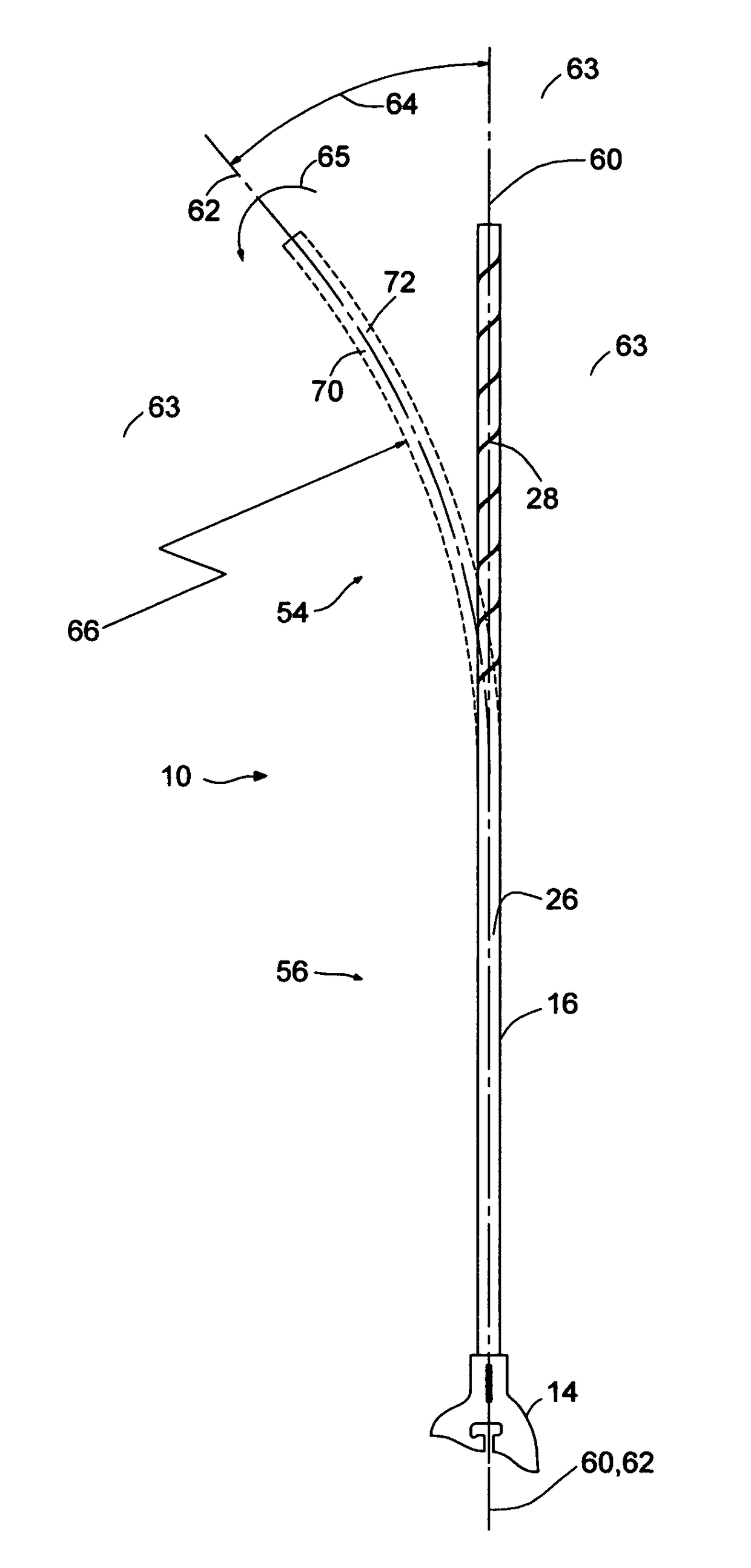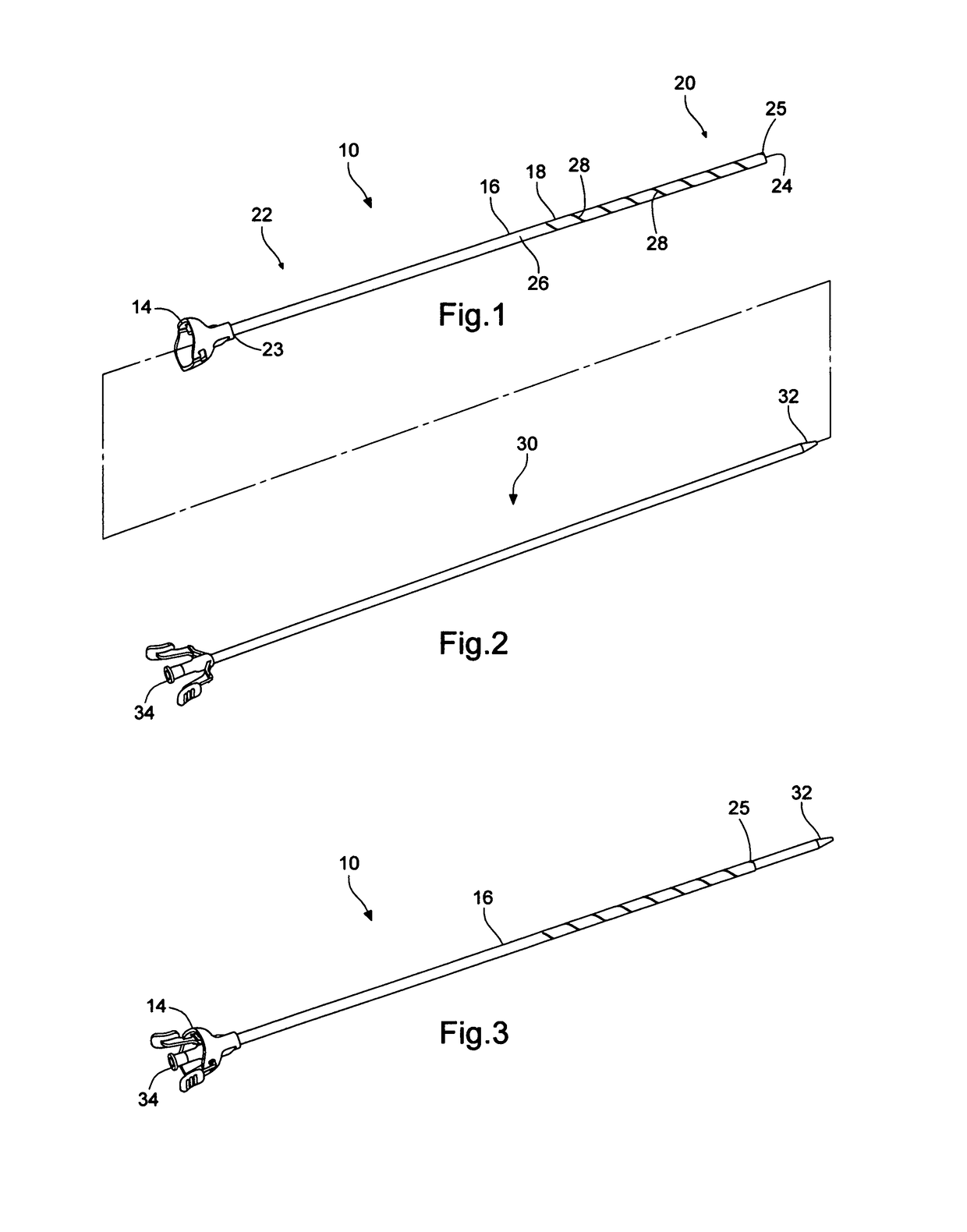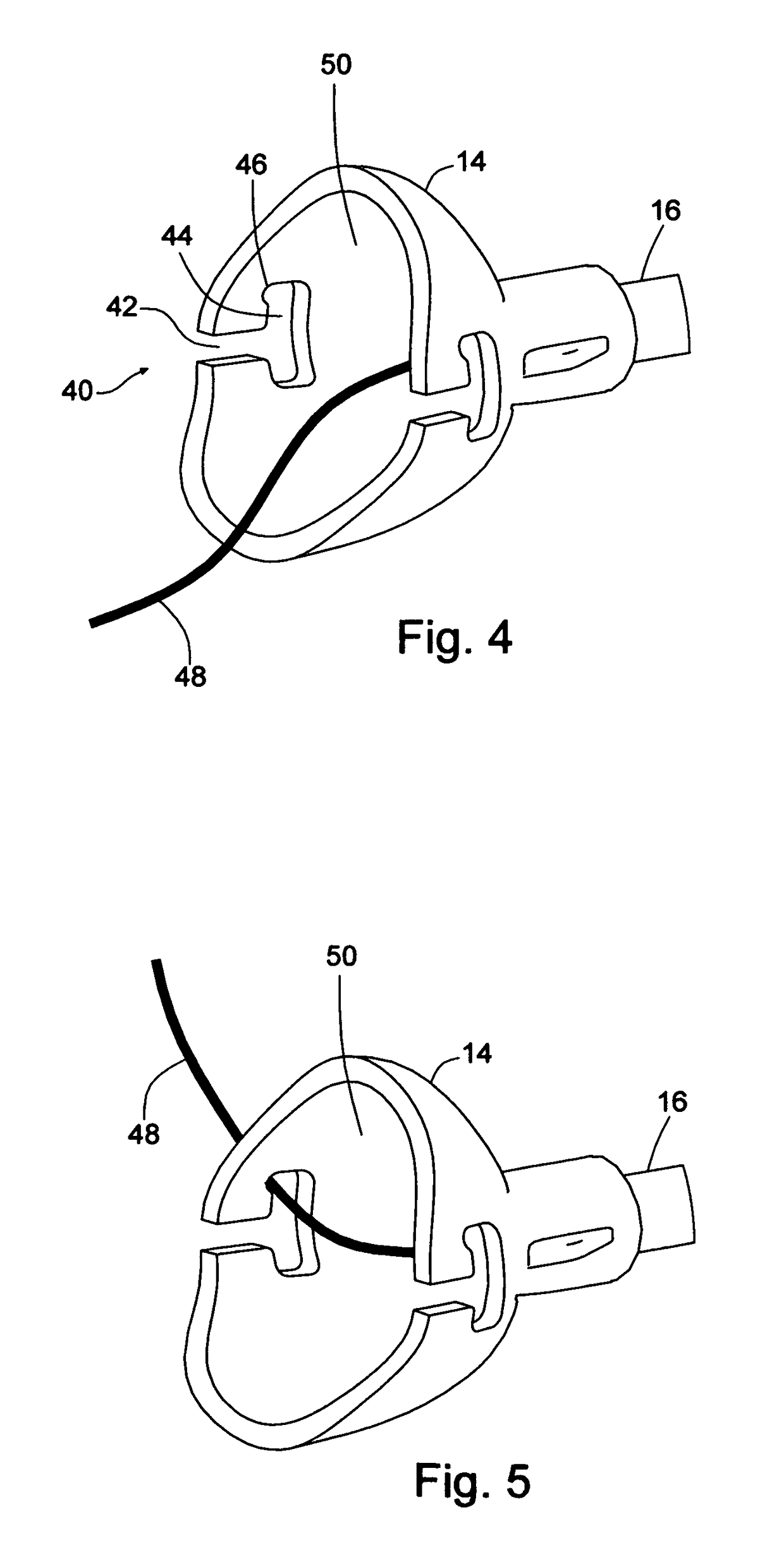Bend limiting access sheath
a technology of access sheath and looping shaft, which is applied in the field of surgical access devices, can solve the problems of kinking of the tubular frame, reducing the ability and overbending or looping of the access sheath's shaft in the bladder, so as to facilitate the easy advancement of the guidewire, improve lubricity, and change the flexibility
- Summary
- Abstract
- Description
- Claims
- Application Information
AI Technical Summary
Benefits of technology
Problems solved by technology
Method used
Image
Examples
Embodiment Construction
[0040]FIG. 1 shows an access sheath 10 that consists of a hub 14 and a tube or sheath 16. The access sheath 10 generally consists of a distal section 20 which may be positioned within a patient, and a proximal section 22 with proximal end 23 into which other medical devices may be introduced. A hub 14 is located at the proximal section 22 to facilitate the insertion of medical devices. The tube or sheath 16 includes a tubular frame 18 that surrounds an internal passageway 26 leading from the hub 14 at proximal end 23 of the proximal section 22 to the opening 24 at the distal end 25 of the distal section 20. The sheath length in FIG. 1 is the distance between 23 and 25. By the use of this passageway 26, other medical devices may gain access to, and retrieval from, the interior of the patient. One use is the removal of stones from a patient's kidney. In that procedure an endoscope visualizes stones in the kidney so that they may be captured with a stone basket. The stone, stone basket...
PUM
 Login to View More
Login to View More Abstract
Description
Claims
Application Information
 Login to View More
Login to View More - R&D
- Intellectual Property
- Life Sciences
- Materials
- Tech Scout
- Unparalleled Data Quality
- Higher Quality Content
- 60% Fewer Hallucinations
Browse by: Latest US Patents, China's latest patents, Technical Efficacy Thesaurus, Application Domain, Technology Topic, Popular Technical Reports.
© 2025 PatSnap. All rights reserved.Legal|Privacy policy|Modern Slavery Act Transparency Statement|Sitemap|About US| Contact US: help@patsnap.com



